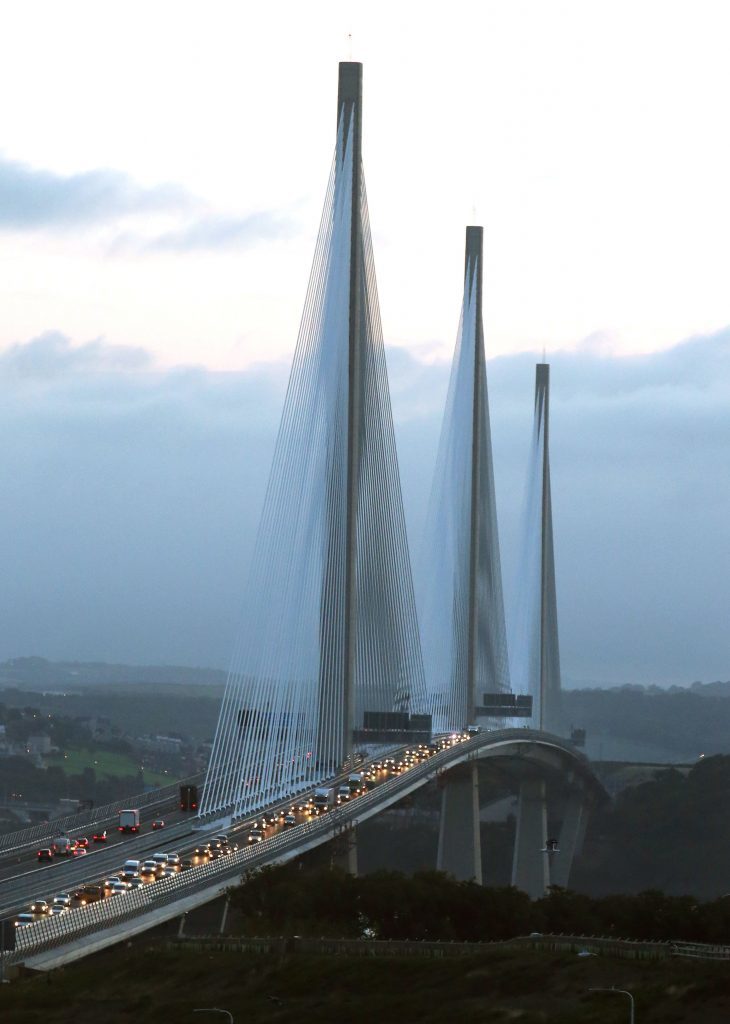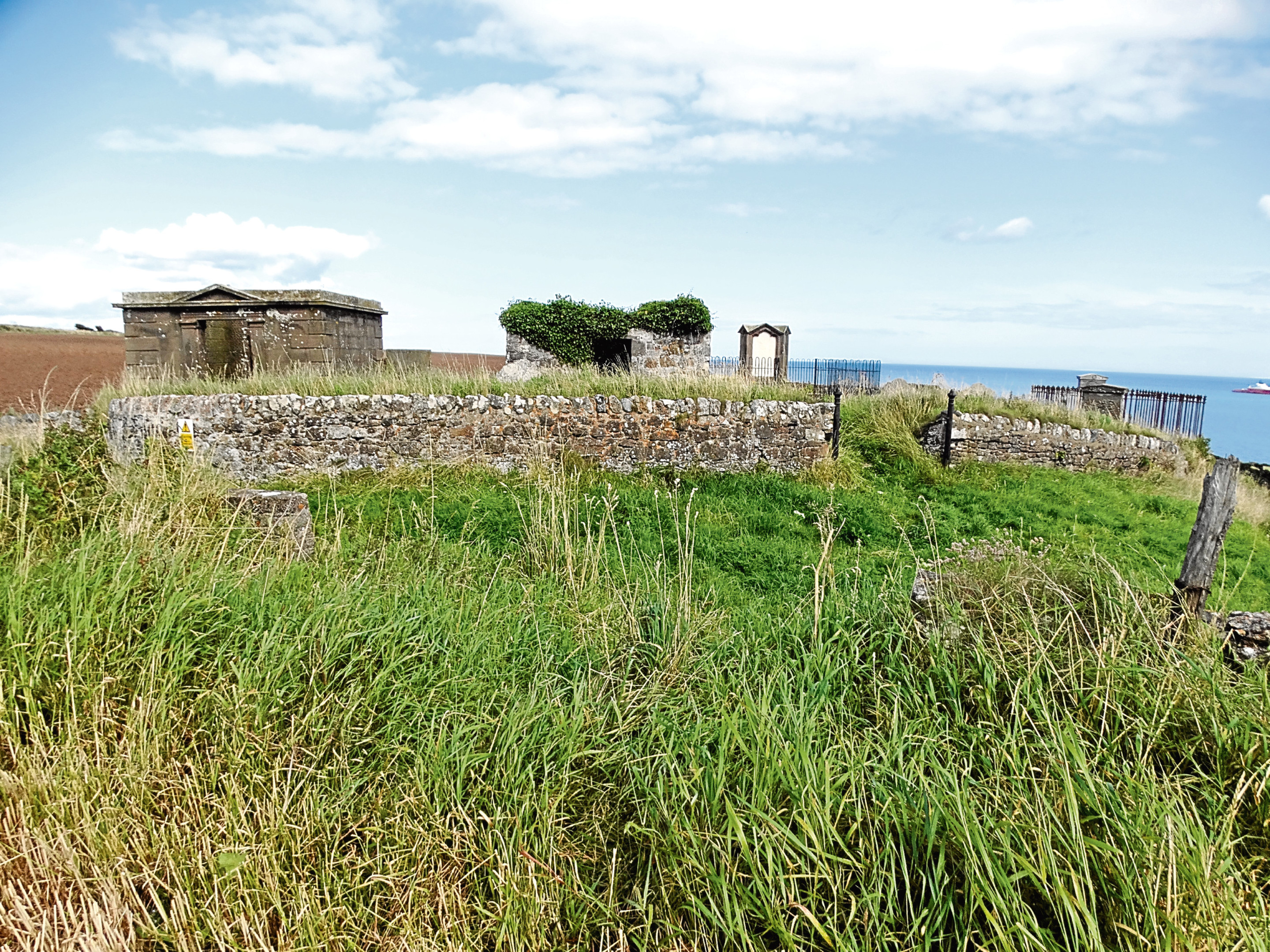Victim of sea winds and salt spray, the ruined chapel and graveyard of St Skae stands atop a rocky headland looking over the North Sea known to Montrosians as the Elephant Rock. I keep an eye out for it whenever I take the train from Montrose to Edinburgh.
It’s untended and badly overgrown. A headstone tells the pathetic story of infant mortality 150 years ago.
James Macdonald of Dunninald buried five of his children before meeting the grim reaper himself.
The soil can scarcely be more than a foot deep in most places before hitting bedrock yet, here, in this isolated patch, gravediggers could delve down six feet.
Here, men and women, separated in life by the divisive social proprieties of the time, spin out the rest of their memorial in neighbourly decay.
Long journey
It’s been a familiar train journey since I was a youngster aged nine, waving goodbye to my parents standing on Montrose station as the old steam train pulled out for the journey to Edinburgh Waverley and onwards to Musselburgh station, and the start of a new term at boarding school.
The two great railway bridges over the Tay and Forth are monuments to the best traditions of Scottish engineering. They are both showing signs of their age but they have stayed in better long-term health than their road bridge counterparts.
The two bridges join Fife to the rest of Scotland.
Much like the Howe of the Mearns, the Howe of Fife is a wide plain.
The peaks of the Lomond Hills, lying west of the railway, are the highest point in this richly agricultural county.
Meaning “beacon hills”, there are remains of a Pictish fort on one summit.
Once past Kirkcaldy the line runs alongside the shore. Looking down the Firth of Forth you see the old volcanic plug of North Berwick Law.
During the Napoleonic Wars a signalling station was built on the summit to warn the populace in the event of an impending French invasion.
The white lump of the Bass Rock, sitting in the mouth of the Firth, off North Berwick, was for several centuries one of Scotland’s most notorious prisons.
It didn’t do to make the error of being on the losing side.
It was – still is – cold, damp, smelly and covered in generations of gannet guano.
Across the Firth of Forth, the extinct volcano of Arthur’s Seat broods over Edinburgh. But it was looking well in Saturday’s afternoon sun.
Arthur’s Seat was one of the scenes of my student days.
The Doyenne and I walked to its summit on May mornings so she might bathe her face in the dawn dew.
The military and defensive value of a hilltop was made good use of here too, for evidence of an Iron Age fort has been found.
And there’s been a fortress on Edinburgh’s Castle Rock, another extinct volcano, for more than 30 centuries.
The train rolled on to the Forth Bridge. Beside it they built the Forth Road Bridge and now the Queensferry Crossing.

The new bridge truly is a structure of elegant, dynamic beauty.
The Forth Bridges Forum is promoting the three bridges as a tourist destination.
The magnificent examples covering two centuries of Scottish engineering innovation and excellence will bring the bridgers – if that’s the right description – in their hordes to gaze and wonder.
The railway bends east towards Edinburgh, keeping pace with Robert Louis Stevenson’s Hills of Home, the Pentland Hills marching south-west to meet the headwaters of the River Clyde.
I’d be meeting the Doyenne soon, who was driving up from Cumbria, and we’d join friends for a night out together and a pleasant meal.
Electrifying thoughts
There has been much talk about diesel and petrol-less cars and how the future is in electric propulsion – some for, some against – all, as usual, creating turmoil in my unmechanical mind.
I had a window seat on my journey to Edinburgh and I looked out on the seasonal golden harvest landscape.
It got me thinking how the agricultural industry might respond to an emissionless future.
All these electric vehicles will require fuel tanks called batteries.
What size of batteries will a modern tractor pulling a six-furrow plough through wet, clay soil, require?
Will there need to be a second tractor alongside, pulling a bogey full of back-up batteries? Which would seem to defeat the purpose.
Quad bikes and Land Rovers are the farmers’ workhorses and what happens when they run out of juice and the nearest refuelling point is 10 miles away?
What happens when there is a power cut and the whole system breaks down?
What will be the future of horsepower?
They took it away from horses and stuffed it into internal combustion engines.
Maybe this is the opportunity horses have been waiting for to reclaim horsepower.
The wheel will turn full circle and in 30 years’ time we’ll be back again driving around in a pony and trap.
It’s all too much of a philosophical conundrum.
I’m off with Inka for a walk.


